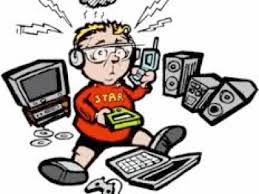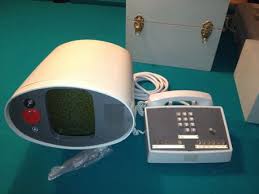It’s a common refrain in senior living that today’s assisted living communities are closer to yesterday’s skilled nursing facilities.
Seekers of Meaning Podcast Posted Online March 7, 2025
What's Next Longevity Deal Talk Episode 32, January, 2025
What's Next Longevity Venture Summit, June, 2025

 Largest city in the US shows a path for an aging society. New York has long been a host and leader in supporting older adults, from being a
Largest city in the US shows a path for an aging society. New York has long been a host and leader in supporting older adults, from being a  Recent announcements, interesting offerings are worth a look. AARP recently completed the judging process for its
Recent announcements, interesting offerings are worth a look. AARP recently completed the judging process for its  Boomers and technology – it’s a given. Yesterday yet another baby boomer reporter asserted what is believed by many to be the obvious. Baby boomers will not be tech-phobic (presumably like their parents) – but will be willing and able to use the newest technology in their later years. What’s the proof? They use it now – for example,
Boomers and technology – it’s a given. Yesterday yet another baby boomer reporter asserted what is believed by many to be the obvious. Baby boomers will not be tech-phobic (presumably like their parents) – but will be willing and able to use the newest technology in their later years. What’s the proof? They use it now – for example,  Dial-up lives on -- and not necessarily out of preference. You may have read this last week:
Dial-up lives on -- and not necessarily out of preference. You may have read this last week:  Technology gadgets – ecosystem incompatibility. Look around a very digital home filled with parallel and incompatible ecosystems – and sigh. So many parts, so little integration – it seems vendors compete to death to NOT work together. Consider
Technology gadgets – ecosystem incompatibility. Look around a very digital home filled with parallel and incompatible ecosystems – and sigh. So many parts, so little integration – it seems vendors compete to death to NOT work together. Consider  Imagine all the non-digital photos and memorabilia. Forget Airbnb and driving for Uber. Boomers with creativity, organizational skill and some technology can follow multiple small business paths that have large emotional implications for the customer. Consider the large and small albums of photos, cassette tapes, home movies – not just from the boomers aged 51-71, but from their parents, and even some from their parents’ parents. Will anyone want it? Cynics contend that not only will the old content be lost due to disinterest, but that current content (selfies, group photos, Facebook and Instagram shots of that great dinner) will also be
Imagine all the non-digital photos and memorabilia. Forget Airbnb and driving for Uber. Boomers with creativity, organizational skill and some technology can follow multiple small business paths that have large emotional implications for the customer. Consider the large and small albums of photos, cassette tapes, home movies – not just from the boomers aged 51-71, but from their parents, and even some from their parents’ parents. Will anyone want it? Cynics contend that not only will the old content be lost due to disinterest, but that current content (selfies, group photos, Facebook and Instagram shots of that great dinner) will also be  Surveyed about technology, but untrained in its use. Does this describe someone you know? According to Pew’s latest report,
Surveyed about technology, but untrained in its use. Does this describe someone you know? According to Pew’s latest report,  What problem is being solved? Consider the solution to slightly thorny and REALLY thorny problems. Do you wonder about the thought process that produces them – isolated in a conference room bubble, what are the thinkers considering before these announcements? Must a misfire (or multiple misfires) precede the right solution? And shouldn't the solutions be of a scale (large or small) that fits or sounds like it fits the problem?
What problem is being solved? Consider the solution to slightly thorny and REALLY thorny problems. Do you wonder about the thought process that produces them – isolated in a conference room bubble, what are the thinkers considering before these announcements? Must a misfire (or multiple misfires) precede the right solution? And shouldn't the solutions be of a scale (large or small) that fits or sounds like it fits the problem? In home and out and about – new and not quite here offerings. The top of the list alphabetically is the not-yet-here and pricey
In home and out and about – new and not quite here offerings. The top of the list alphabetically is the not-yet-here and pricey  Tech adoption of the 65+ is now buried in a Pew appendix. If age were an ethnic or racial minority, outrage at technology ageism would be vocal and constant. The 65+ are a
Tech adoption of the 65+ is now buried in a Pew appendix. If age were an ethnic or racial minority, outrage at technology ageism would be vocal and constant. The 65+ are a